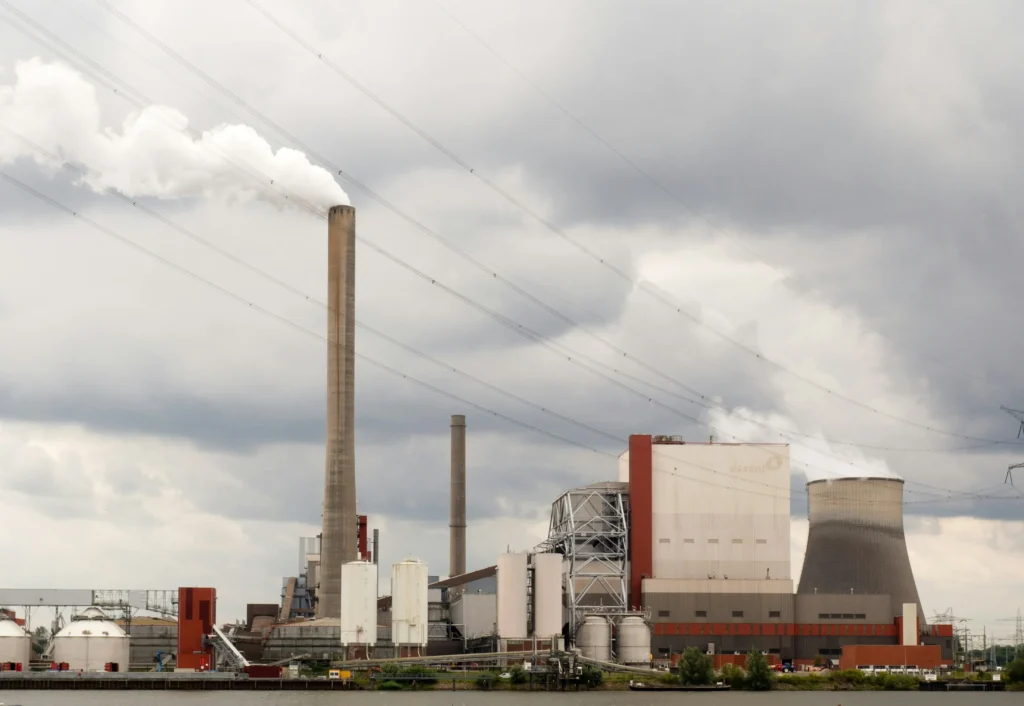Environmental Impacts of Coal
5 minute readCoal energy has powered industries for decades, but its environmental impact raises serious concerns
Home > Learning Center > Energy Production > Coal Power Plants in Texas
As of 2023, Texas operates 13 coal-fired power plants.
5 minute read • Last update May 2025

Texas is the largest electricity-producing state in the U.S., and coal has historically been one of the key fuels powering its grid. But as energy markets shift, the number of coal-fired power plants in Texas is declining.
As of 2024, Texas has 13 operational coal-fired power plants.
This number is significantly lower than just a decade ago, as coal’s share of the state’s power generation mix continues to shrink in favor of cheaper natural gas and growing renewable resources like wind and solar.
These plants are primarily located in Central and East Texas, near lignite coal deposits, rail lines, and major transmission corridors. Here are some of the key facilities:
| Power Plant Name | Location (County) | Capacity (MW) | Year Commissioned | Notes |
|---|---|---|---|---|
| W.A. Parish Generating Station | Fort Bend | 3,690 | 1977–1982 | Largest in Texas |
| Martin Lake Power Plant | Rusk | 2,410 | 1977–1979 | Operated by Luminant |
| Oak Grove Power Plant | Robertson | 1,710 | 2010–2011 | Newer facility |
| Limestone Generating Station | Limestone | 1,689 | 1985–1986 | NRG-operated |
| Fayette Power Project | Fayette | 1,615 | 1979–1988 | Jointly owned by LCRA and Austin Energy |
| J.K. Spruce Power Plant | Bexar | 1,444 | 1992–2010 | Operated by CPS Energy |
| Sandy Creek Energy Station | McLennan | 1,008 | 2013 | One of the newest |
| Tolk Station | Lamb | 1,136 | 1982–1985 | Scheduled to close by 2032 |
| Harrington Station | Potter | 1,080 | 1976–1980 | Conversion to natural gas planned by 2025 |
| Luminant’s Coleto Creek | Goliad | 622 | 1980 | Scheduled to close by 2027 |
| San Miguel Electric Cooperative | Atascosa | 391 | 1982 | Lignite-fueled |
| Major Oak Power Station (a.k.a. Twin Oaks Power Station) | Robertson | 349 | 1990–1991 | Smaller facility |
| Welsh Power Plant | Titus | 1,116 | 1977–1982 | To cease coal operations by 2028 |
While the number of facilities listed may vary depending on how units and sites are counted, the net number of actively generating, coal-burning plants is 13—and that number is expected to drop further by 2030.
Among the above list, several are preparing for retirement or repurposing:
Texas coal-fired plants have a combined generation capacity of 20,000 megawatts (MW). At their peak in the early 2000s, coal plants contributed over 120 terawatt-hours (TWh) annually.
By 2023, that output dropped to below 75 TWh, or about 13% of the state’s total electricity generation, according to the U.S. Energy Information Administration (EIA).
Of the four main types of coal, Texas primarily relies on two: locally mined lignite and sub-bituminous coal imported from Wyoming’s Powder River Basin.
Total coal consumption in the state has dropped from more than 80 million short tons per year in 2010 to under 40 million tons in 2023. This decline is driven by economic competition, aging infrastructure, and stricter emissions regulations.
Coal-fired electricity generation in Texas began gaining traction in the mid-20th century, particularly during the postwar industrial expansion. By the 1980s, coal became a major baseload power source due to its abundance and relatively low cost. Lignite, a low-grade coal found in Central and East Texas, was heavily mined and burned in onsite power plants.
However, coal’s dominance began eroding in the 2010s. The shale gas boom drastically reduced natural gas prices, making coal less competitive. At the same time, air quality regulations, including mercury and sulfur dioxide limits, raised operating costs for coal plants. The trend accelerated after 2015, leading to widespread closures and fuel switching across the state.
According to data collected by the Statista Research Department, Pennsylvania has the highest number of active coal power plants in the U.S.A. with 15.
Texas ranks 2nd with 13, followed closely by Indiana (10) and Wyoming (10). It’s important to note that electricity generation from coal energy ranges from plant to plant. Texas leads the way with the most electricity produced from coal power plants.
In 2023, coal-fired power plants in Texas generated approximately 71,615 gigawatt-hours (GWh) of electricity, accounting for just over 13% of the state’s total electricity generation.
This marks a significant decline from 2012, when coal contributed 138 million megawatt-hours (MWh), reflecting a nearly 50% reduction over the past decade
Despite declining market share, coal continues to provide dispatchable baseload power—electricity that is available 24/7 regardless of weather conditions.
This is a major benefit of coal, especially important during peak demand events, like winter freezes or summer heat waves. Coal’s ability to store fuel onsite also gives it an edge over natural gas, which depends on real-time pipeline deliveries.
No, there are no plans to build new coal power plants in Texas. As of 2025, there are no proposed or permitted new coal plants in the ERCOT interconnection queue.
Developers have overwhelmingly shifted to natural gas peaker plants, utility-scale solar, wind, and battery storage projects. Regulatory burdens, high capital costs, and uncertain economics have effectively halted coal expansion in Texas.
Texas has seen a wave of coal plant retirements over the past decade, with more scheduled:
The common reasons for closure include:
Coal’s defenders argue it plays a vital role in ensuring grid stability due to its dispatchable nature.
During Winter Storm Uri in 2021, coal plants provided essential capacity, though not without failures. Critics argue that relying on an aging fleet of high-emission plants is not a viable long-term solution.
ERCOT is exploring market reforms aimed at incentivizing firm, reliable generation—but it remains unclear whether that will favor coal, gas, or emerging technologies like hydrogen and long-duration storage.
Texas has hosted one of the largest CCS pilot projects in the U.S.—Petra Nova, located at the W.A. Parish plant. The project aimed to capture 1.6 million metric tons of CO₂ annually but was shut down in 2020 due to economic challenges.
While the Inflation Reduction Act of 2022 expanded tax credits for CCS, no Texas coal plant currently operates with commercially viable capture technology. CCS remains a potential—but unproven—lifeline for the coal industry.
Coal-fired power in Texas is in structural decline. The state now operates just 13 coal-fired plants, with several more set to close or transition to cleaner technologies. While coal still plays a role in ensuring baseload reliability, market and regulatory forces are driving the grid toward lower-carbon, more flexible resources.
Texas is unlikely to build new coal infrastructure in the future—but the debate over grid stability, affordability, and environmental tradeoffs will keep coal in the energy policy conversation for years to come.
Explore the BKV Energy Learning Center for deep dives into topics like natural gas safety, electricity plan comparisons, grid reliability, and renewable energy trends.
Graham Lumley, Digital Marketing Manager at BKV Energy, leads digital and traditional marketing strategies, focusing on educating Texans about the state's deregulated energy market. With over 8 years of marketing experience, he creates content to help consumers understand and save on their energy bills, bringing a fresh and dynamic approach to the industry.

Coal energy has powered industries for decades, but its environmental impact raises serious concerns

Coal is a natural energy source that has played a crucial role in powering human development for centuries. It forms
Get $50 off your electric bill!
Use code BKVEJOINUS50
Enter your zip code to shop BKV Energy's affordable, fixed-rate Texas electricity plans. Use the promo code for $50 off your electric bill.